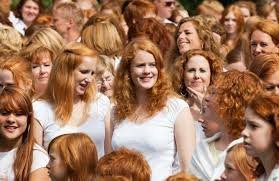Demographics of Ireland
Demographics of Ireland

The total population of Ireland is 4,803,748 people. People in Ireland speak the English, and Irish languages. The linguistic diversity of Ireland is almost homogeneous according to a fractionalization scale which for Ireland is 0.0312. The median age is approximately 35.7 years. Life expectancy in Ireland is 81. The female fertility rate in Ireland is 2. Around 25% of the population of Ireland are obese. The ethnic diversity is almost uniform according to a fractionalization scale which for Ireland is 0.1206. To find out specifics of language, religion, age, gender distribution, and advancement of people in Ireland see the sections below, as well as visit the section concerning the education in the country.
Population
In Ireland, the population density is 65 people per square kilometer (169 per square mile). Because of this statistic, this country is considered to be sparsely populated. The total population of Ireland is 4,803,748 people. Ireland has approximately 746,260 foreign immigrants. Immigrants in Ireland represent 0.3 percent of the total number of immigrants in the world. Immigrants in Ireland represent 15.9 percent of the total number of immigrants in the world. The ethnic diversity of Ireland is almost uniform according to a fractionalization scale based on ethnicity. Ethnic fractionalization (EF) deals with the number, sizes, socioeconomic distribution, and geographical location of distinct cultural groups, usually in a state or some otherwise delineated territory. Specific cultural features might refer to language, skin color, religion, ethnicity, customs and traditions, history, or other distinctive criteria, alone or in combination. Frequently, these features are used for social exclusion and the monopolization of power. The index of ethnic fractionalization in Ireland is 0.1206. This means that the people living in Ireland are coming from a narrow group of ethnicities, all of which are related to one another. EF is usually measured as 1 minus the Herfindahl concentration index of ethnolinguistic group shares, which reproduces the probability that two randomly drawn individuals from the population belong to different groups. The theoretical maximum of EF of 1 means that each person belongs to a different group. Read below for statistics of Ireland on median age and gender distribution at various ages.
Age
The median age is approximately 35.7 years. The median age for men is 35.4, while the median age for women is 36.1.
Gender
The sex ratio, or the number of males for each female (estimated at birth), is 1.07. It can be further divided into the following categories: sex ratio under 15 - 1.07; sex ratio from 15 to 64 - 1; sex ratio over 64 - 0.81; total sex ratio - 0.99. Total sex ratio is different from sex ratio estimated at birth. This is due to the fact that some newborns are considered in the sex ratio estimated at birth but pass away within the first weeks of their life and are not included in the total sex ratio.
Religion
The majority religion of Ireland is Christianity, the followers of which comprise 92% of all religious believers in the country. Christianity is an Abrahamic monotheistic religion based on the life and teachings of Jesus Christ as presented in the New Testament. Christianity is the world's largest religion, with over 2.4 billion adherents, known as Christians. Christians believe that Jesus is the Son of God and the savior of humanity whose coming as Christ or the Messiah was prophesied in the Old Testament. Besides Christianity, there are several other religions present within the country. Other religions in Ireland are Islam, folk religions. The religious diversity of Ireland is vaguely diverse according to a fractionalization scale based on the number of religions in Ireland. The index of religious fractionalization in Ireland is 0.155. This score means that within the country there is one major with a few other minor beliefs.
What's Your Reaction?















